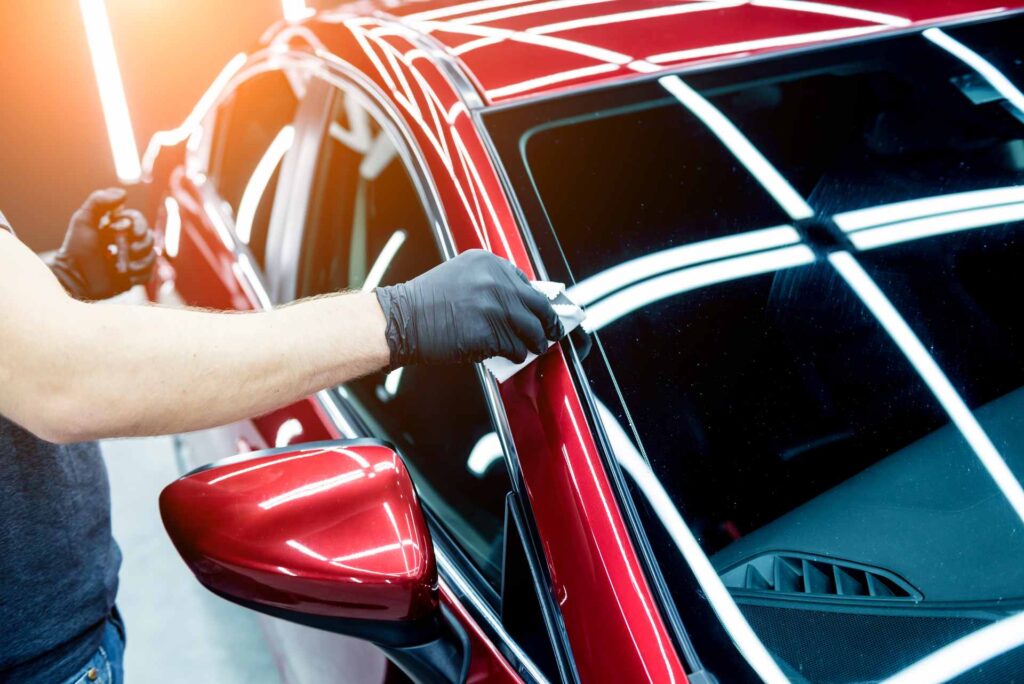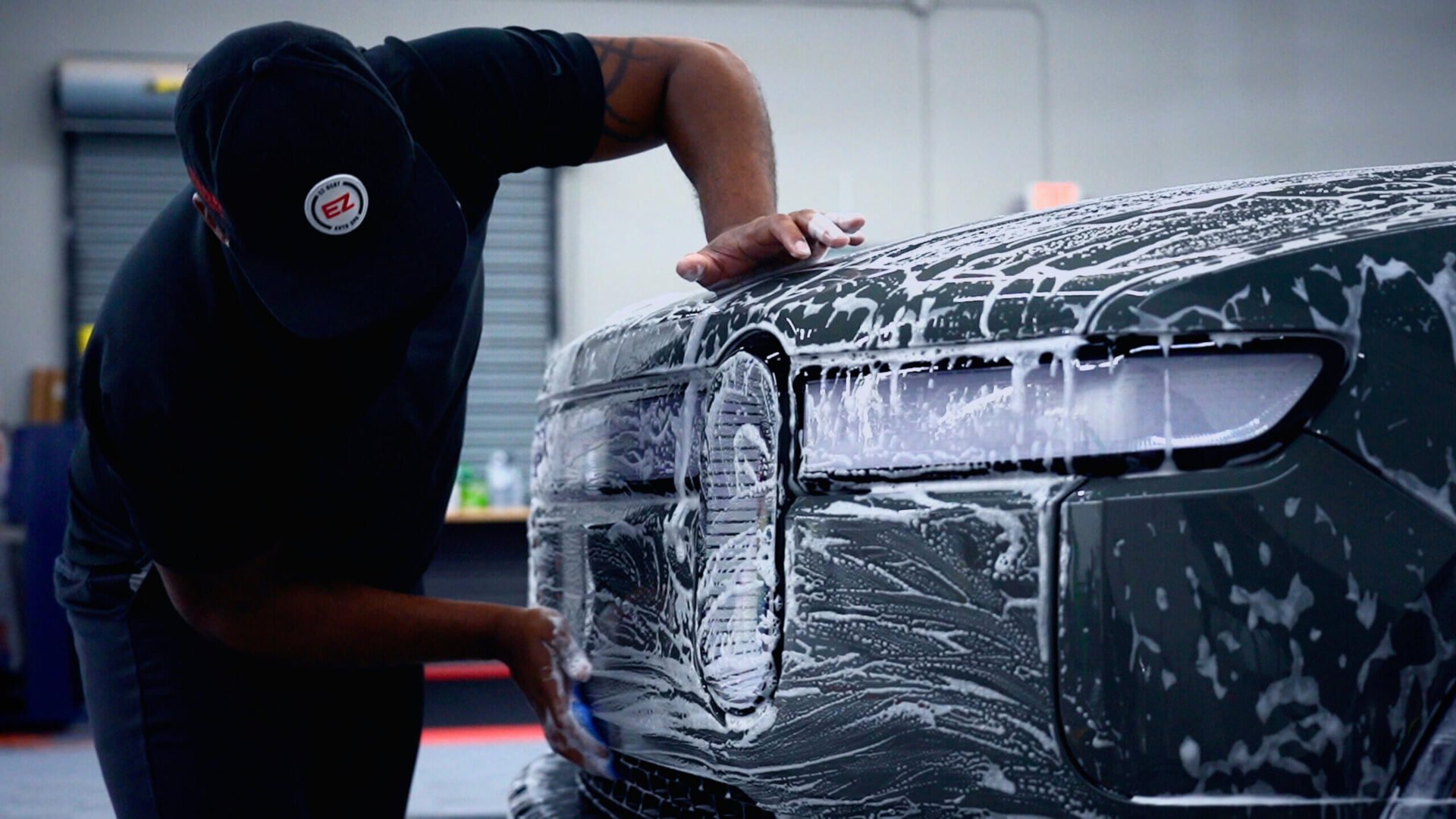The Cost of Ceramic Coating: Is It Worth the Financial investment?
The Cost of Ceramic Coating: Is It Worth the Financial investment?
Blog Article
The Value of Ceramic Coating: Protecting Your Vehicle's Outside With Precision
In a period where preserving the practical and aesthetic honesty of your automobile is critical, ceramic coating arises as a critical solution. This safety layer not only guards versus environmental difficulties however additionally raises the aesthetic charm of your car. With its special bonding residential properties, ceramic finishing supplies a level of defense that far exceeds traditional waxing techniques. Yet, how precisely does it attain such amazing outcomes? As we discover the nuances of its application and compare it to various other choices, one can not wonder however aid concerning the specifics that make this technology indispensable for modern auto treatment.
Benefits of Ceramic Coating
When it concerns protecting a car's aesthetic allure, ceramic coating offers significant advantages. This advanced protective layer provides a durable shield against ecological impurities, consisting of dust, crud, and unsafe UV rays. By creating a semi-permanent bond with the lorry's paint, ceramic layers effectively protect against oxidation and fading, ensuring that the car keeps a shiny, showroom-like coating for a prolonged period. This not only enhances the vehicle's aesthetic charm however also adds to its lasting worth.
In enhancement to its safety top qualities, ceramic finishing supplies remarkable hydrophobic properties, creating water and other fluids to grain off easily. This function simplifies the cleaning process, as dust and debris are much less most likely to follow the surface area, lowering the frequency and effort needed for maintenance. Moreover, the covering's resistance to chemical discolorations from acidic contaminants like bird droppings and tree sap is another notable benefit, minimizing possible paint damages.
Ceramic coatings likewise boost scratch resistance, supplying a layer that can soak up minor abrasions and swirl marks. This characteristic is specifically useful in keeping a pristine surface area, lowering the likelihood of noticeable flaws and maintaining the honesty of the vehicle's paintwork gradually.

Exactly How Ceramic Finish Functions
Comprehending the auto mechanics behind ceramic covering reveals its efficacy as a safety option for cars. Ceramic coverings are essentially fluid polymer applications that chemically bond with a cars and truck's manufacturing facility paint, creating a safety layer.
Application of ceramic layer includes a precise process. The car's surface area should be thoroughly cleansed and decontaminated to make certain ideal adhesion. When applied, the fluid polymer forms a semi-permanent bond with the paint, solidifying into a clear, resilient guard. This shield boosts the automobile's gloss and hydrophobic residential properties, helping with less complicated cleaning by creating water and contaminants to grain and slide off effortlessly.
Moreover, the coating's molecular framework gives resistance to minor scratches and chemical discolorations. Unlike waxes or sealers that sit on top of the paint, ceramic finishes incorporate with the surface, providing resilient defense. This integration is essential to its performance, making certain the car's surface remains pristine for many years.
Comparing Ceramic Coating to Alternatives
In the world of automotive protection, ceramic finish stands as a formidable option when compared to traditional alternatives such as sealers and waxes. While waxes provide a short-term lustrous finish, usually lasting just a couple of weeks to months, ceramic coverings provide a longer-lasting solution, often enduring for several years. This durability is connected to the chemical bonding that takes place when ceramic finishes are used, developing a solid layer that is immune to ecological risks.
Contrastingly, sealants, although even more durable than waxes, still fall brief of the durable protection offered he said by ceramic layers. Find Out More Sealers can typically last for up to a year, giving an artificial shield versus specific elements. They do not have the remarkable hydrophobic homes and UV protection that ceramic finishes deliver.
In addition, ceramic finishings offer improved scratch resistance, which neither waxes nor sealants can successfully match (ceramic coating). This is particularly valuable in preserving a vehicle's immaculate appearance. In addition, ceramic coverings streamline maintenance initiatives by reducing the adherence of dust and crud, consequently facilitating much easier cleansing. In summary, while typical waxes and sealants use standard protection, ceramic layers present a detailed, lasting solution that considerably maintains the vehicle and enhances's exterior surface.
Application Process Discussed
Using ceramic finishing to a car requires a thorough process to ensure optimum results and resilience. As soon as cleaned up, the vehicle is dried out and polished to remove any type of imperfections, as any kind of existing swirls or scrapes can end up being extra noticable after the covering is used.
Complying with surface area preparation, the application of the ceramic covering starts. Making use of an applicator pad, the ceramic finish is applied in little sections to guarantee also protection.
After application, the coating requires a certain treating period, throughout which the car needs to be protected from water and pollutants. This healing process can vary depending upon the item yet generally ranges from 24 to two days. Inevitably, this detailed process is critical in accomplishing a durable and shiny coating.
Upkeep Tips for Long Life
To maintain the longevity of a ceramic covering, adherence to a regimented maintenance routine is vital. Routine washing is vital; utilize a pH-neutral cars and truck hair shampoo and soft microfiber gloves to prevent abrasions. Prevent automatic vehicle washes, as their severe brushes can compromise the covering's integrity. Instead, go with a hand clean to ensure thorough yet gentle cleansing.
Post-wash, drying the car with a tidy microfiber towel protects against water areas that may deteriorate the finishing in time. Additionally, use a ceramic finishing booster every few months. These boosters enhance click resources the hydrophobic homes and enhance the layer's safety capabilities, guaranteeing it remains effective against impurities.
Remember that parking areas play a critical role in maintenance. ceramic coating. Whenever feasible, park in shaded areas to minimize UV direct exposure, which can gradually damage the finishing. For long-term storage space, consider utilizing a vehicle cover for included protection versus ecological aspects
Verdict
In verdict, ceramic coating serves as an essential protective layer for car exteriors, using resilient protection versus ecological aspects such as dust, uv, and gunk rays. Understanding the application procedure and adhering to upkeep referrals are essential for making the most of the longevity and effectiveness of ceramic coating.
When it comes to preserving a vehicle's visual allure, ceramic finish supplies considerable advantages. By forming a semi-permanent bond with the vehicle's paint, ceramic coatings properly stop oxidation and fading, making sure that the automobile keeps a shiny, showroom-like surface for an extended duration. Ceramic layers are basically fluid polymer applications that chemically bond with a car's factory paint, producing a safety layer. In recap, while typical waxes and sealers use standard defense, ceramic finishings offer a detailed, long-term remedy that dramatically maintains the vehicle and enhances's outside surface.

Report this page